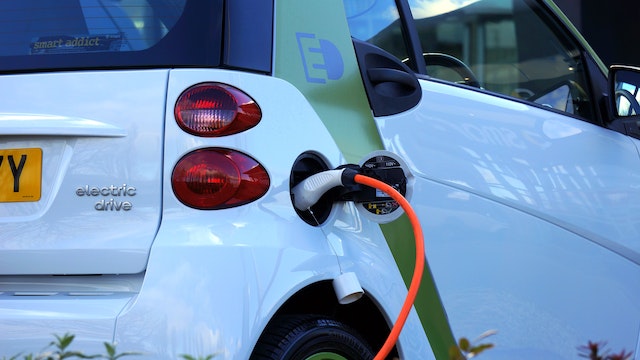
What is a solid-state battery? It is a battery that uses a solid electrolyte instead of a liquid solution.
As we have more and more electrical appliances, we need more batteries. Our vehicles are gradually becoming electric as well and the size and efficiency of their batteries dictate how much range they have.
All batteries basically work in the same way. They have an electrolyte solution, which is a chemical that has gained electrons. They have an anode that takes the electrons out of the electrolyte solution. They have a cathode that attracts the electrons from the anode. They have a circuit to connect the anode and the cathode. They have a semi-permeable barrier to stop the electrons flowing to the cathode without going through the circuit. When the device you are using is switched on, the electrons that have accumulated at the anode flow through the circuit to the cathode, creating electricity. A rechargeable battery works in the same way, except it is possible to reverse the process. When you plug them in, the electrons flow from the circuit back into the electrolyte solution. Rechargeable batteries slowly lose power over time because the process is not 100% efficient, which is why you need to replace the batteries after a few years.
Many rechargeable batteries these days are lithium batteries. Lithium-ion is used because it is a very energetic metal. They work in the same way as other batteries, but the electrolyte solution is made up of a lithium-ion gel. Lithium can store a lot more electrons in its atomic bonds than other batteries, which means that the batteries can be smaller. A lithium-ion battery can store 150 watt-hours of electricity in a kilogram while a lead-acid battery can only store 25 watt-hours per kilogram. This is the reason why all of our phones have lithium-ion batteries. However, they face a challenge when it comes to electric vehicles. An electric car can only move while it still has power. The average electric car has a roughly 500 kg battery, which provides 75,000 kwh, which equates to a range of about 300 km, depending very much on the car. In order to go farther, you need more batteries, or you need to recharge the batteries.
This is where solid-state batteries come in. Regular lithium-ion batteries have several disadvantages. Firstly, because they are a liquid, they are not very dense. Water is the only substance that is more dense in its liquid state than it is in its solid state. Every other liquid becomes denser when it is a solid. They bleed a lot of their energy as heat, meaning they need to be cooled down and they are potentially flammable. On top of this, lithium is a relatively rare metal and incredible environmental damage happens when it is mined. Solid-state batteries, as the name implies, use a solid in place of a liquid.
A solid-state battery would use a solid substance as the electrolyte, such as ceramics, glass, sulphites, or solid polymers. They work in generally the same way as a regular lithium-ion battery, but they don’t need a separator between the anode and the cathode, and they don’t need the electrolyte solution. The solid material has a cathode at one end and an anode at the other end, with a circuit going from the cathode to the anode. Electrons can only move one way through the material and they gather at the cathode. When power is required, the circuit is opened and the electrons flow through the circuit to the anode, creating electricity. When the battery is plugged in for charging, the electrons flow back the opposite way.
Because they are a solid, solid-state batteries can be between 2 and 10 times denser than a regular liquid battery, which means they can hold 2 to 10 times more power. If a lithium-ion battery can give 150 kwh per kg, a solid-state battery could potentially give 1,500 kwh. That would revolutionize the world of electric vehicles. Solid-state batteries can withstand the extremes of temperature that make electric cars a nightmare in cold or hot countries. They have a longer lifetime and can be recharged up to seven times longer than a regular lithium-ion battery. They also charge much more quickly, which is vital for vehicles.
However, nothing is ever that easy. There are still many things that need to be overcome for solid-state batteries to be a reality. The first is cost. Solid-state batteries are incredibly expensive to produce. This cost will probably come down with research and technical developments, but currently it is a huge limiting factor. They are also very difficult to make and the production probably cannot be upscaled for mass-production. If these problems can be overcome, there is a lot of hope for these batteries. And this is what I learned today.
Sources
https://www.samsungsdi.com/column/technology/detail/56462.html?listType=gallery
https://www.energy.gov/eere/articles/how-does-lithium-ion-battery-work
https://en.wikipedia.org/wiki/Solid-state_battery
https://www.carmagazine.co.uk/electric/solid-state-battery-ev/
https://www.science.org.au/curious/technology-future/batteries
https://article.murata.com/en-global/article/basic-lithium-ion-battery-4
https://electronics.howstuffworks.com/everyday-tech/lithium-ion-battery.htm
https://en.wikipedia.org/wiki/Lithium
